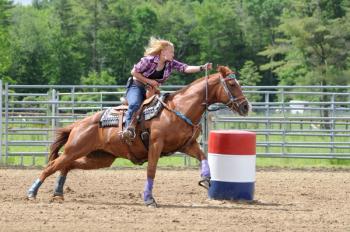
Parvovirus evolving rapidly, study says
Ithaca, N.Y. — Canine parvovirus has undergone epidemic-like growth since its emergence in the late 1970s, effectively doubling its population size every few years.
Ithaca, N.Y. — Canine parvovirus has undergone epidemic-like growth since its emergence in the late 1970s, effectively doubling its population size every few years.
But authors of a Cornell University study on the virus, which appeared last month in the Proceedings of the National Academy of Sciences (PNAS), urge veterinarians not to be alarmed. Though the report reveals parvovirus is under great pressure to change genetically, it still responds to vaccines on the market, says Edwin Hahn, associate dean for Research and Advanced Studies at the University of Illinois's veterinary school.
dvm . NewsBreak
"This report does not mean there's all of a sudden this resurgence of canine parvovirus taking place; actually the opposite has occurred," Hahn says. "The reality is the vaccine is controlling things. But still, we cannot be complacent. We have to watch because this virus is highly variable. It's possible it can jump into wildlife and become something new."
Study's findings
While that's true for all viruses, most fail to spread as rapidly and change as often as parvovirus, says Colin Parrish, a virology professor at Cornell's College of Veterinary Medicine.
Parrish, who likens the virus' spread to that of the flu, says the study looks at two things: the rate of evolution of the virus, meaning how quickly its sequences change, and how fast it moves.
"What we show is that parvovirus is morphing quite quickly compared to other DNA viruses," he says. "And the same sort of changes in the virus that we see in the U.S. are going on everywhere in the world. That suggests the viruses are able to spread very quickly."
Viral evolution
The rate of mutation is most noteworthy, Hahn adds, because DNA viruses aren't expected to evolve quickly. Parvovirus acts more like RNA viruses, which are known for rapid change, the study shows.
Cornell Assistant Professor John Parker, DVM, says he's not surprised.
"What this means is there's pressure on the virus to evolve rapidly; it's constrained to the number of changes it can make," he says. "But this evolution doesn't appear to be driven by the adaptation of vaccines more than its ability to effectively replicate in its host. That's good news. It shows that we're not likely we'll see a new outbreak of canine parvovirus, but of course, we can't predict what will happen in the future."
Jumping species
Scientists can expect further change, considering canine parvovirus isolates have altered greatly since the disease's emergence in 1978, when it jumped species from cats to dogs.
The study also notes that canine parvovirus probably emerged in the dog population up to 10 years before it was first described. It likely maintained in the canine population for several years, seemingly accumulating beneficial mutations under strong positive selection, "until finally emerging as the causes of major epidemics," the study reveals.
"One thing we do know is that initially when canine parvovirus emerged, it was quite different from the virus we would see in cats, and therefore unable to infect them," Parker says. "Today, these two viruses are very similar. It's difficult to tell the isolates apart."
Study recap
While the newest strains of parvovirus are found in Italy and Japan, Parrish notes researcher have not gathered information on the number of cases infected. Vaccination makes that tough to gauge, he says.
"So many dogs are vaccinated these days," he says. "And we never see the virus in natural infection. As far its global spread is concerned, I don't think parvovirus travels with the dog, but on people's shoes and other contaminated materials. The information we have is the same sequences show up all over the world within a year. The only other disease I can think of that moves as fast is probably polio."
Newsletter
From exam room tips to practice management insights, get trusted veterinary news delivered straight to your inbox—subscribe to dvm360.




